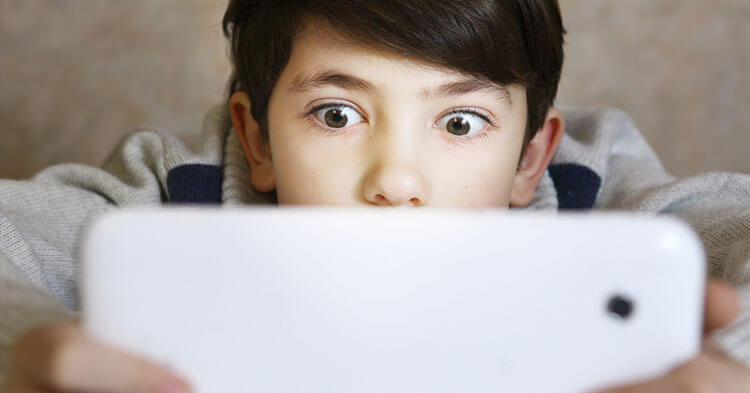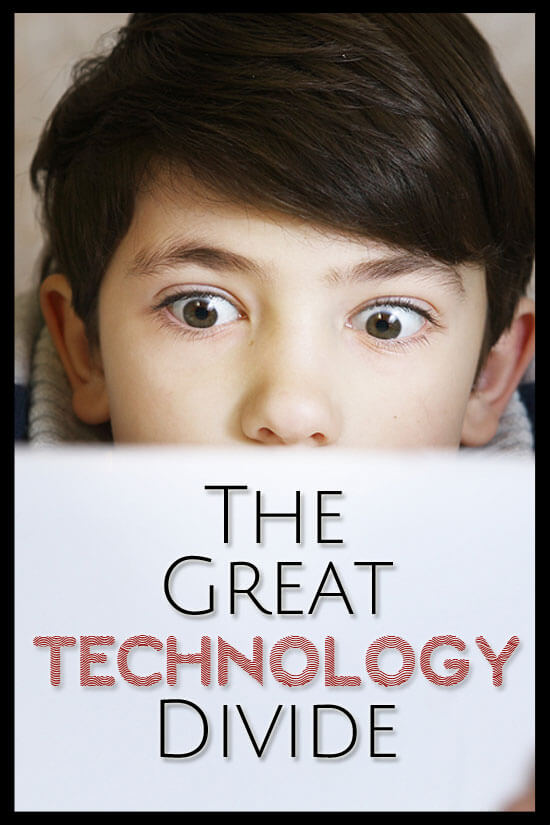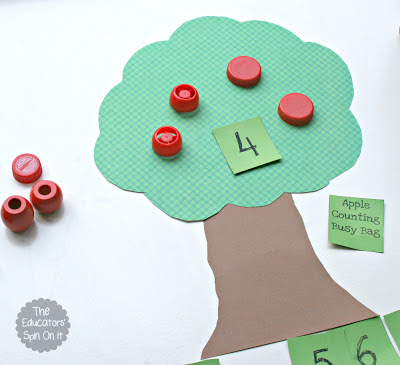The Great Technology Divide

I don’t know what I am doing.
Really. Who has given me this job of raising these tiny humans? Never mind the fact that my husband and I are winging this thing called parenting on a daily basis, now throw the rest of society in the ring with us and then still insist that we don’t screw it up? Impossible.
It’s one thing to navigate infancy, the toddler years, and the young childhood days, but adolescents with devices in their hands that connect them to the rest of the world? Forget it.
I have self-proclaimed control issues that force me to consider the benefits of creating a bubble around my kids. Like a big, soapy bubble that no one could leave. As unrealistic as that is, I know I am not the only one who has considered it. That bubble would have super cool powers to control their actions, thoughts, and feelings. Cool, eh? Well, it isn’t possible, and I can tell you that first hand as I have made a complete fool of myself on more than one occasion attempting to do this. For those of you who haven’t tried this technique, now you can cross it off your list. You’re welcome.
The world our kids currently live in makes it virtually impossible to keep that bubble from popping. Technological advances have far surpassed the average parents’ ability to keep up with the times. Pop! The outside world can bust into that bubble at any point, and we may not even know about it.
My time as an elementary school principal shed light on how often parents are unaware of what their child has access to through their electronic device. I always told my students that I had two main jobs: to keep them safe, and help them learn. To be honest, the “keeping them safe” part of the job kept me awake at night for so many reasons.
On a regular basis, when helping students and parents navigate tricky situations, the topic of technology usage and access would come up. I found myself asking parents if they knew what their kids were accessing on their devices or if they were aware of the content of pop-up ads that appeared on even the most innocent of games. While impressed with many parents’ responses (and wanting them to share all their ideas with me), I was shocked how many parents did not set restrictions on their kids’ devices or have boundaries established around them at all. On several occasions, I found myself whipping out my phone or iPad to show them how to go into the settings and set up restrictions.
That got me thinking. I didn’t innately know how to set up restrictions on my kids’ devices. I learned from another parent. I wasn’t sure how to start a conversation with my children about how much time is too much time to spend gaming or interacting with others in cyberspace. I got ideas about that from magazine articles, conversations with other parents, and stories on the news. It’s being connected with other parents who shared my concerns that help me get informed.
There is no way for us to stay ahead of, or even keep up with, the advances in technology. Therefore, our “bubble” has to adapt. Here’s how: having conversations and maintaining the ability to monitor our kids’ technological landscape.
I have read about and heard from a lot of families about some outstanding household policies that they have implemented. Everything from a box where every person (including mom and dad) hand over their device during supper time or at a particular time in the evening to apps that timeout a device thereby controlling the amount of time a child can use it. These great ideas are out there; we just need to look.
Again, I cannot keep up with all of it so, it comes down to a few basic principles for me regarding technology. Consider these principles my “rope bridge” across the great technology divide between my kids and me.
It’s Not “Yours” It’s “Ours.”
It’s as simple as that. Consider sharing an account for your music, link up (through the cloud) so you can monitor what is happening on your child’s device. This may sound harsh but, for me, it isn’t about the lack of trust in my kids, it’s about not trusting the world full of people that can access my child through their device.
Device checks happen a lot, and my kids know to expect it because we have talked about it and explained why it is important.
Your Digital Footprint Should Represent YOU (and Our Family) Well
We haven’t allowed our kids to have social media platforms yet, but the time is coming. Do a quick experiment: take a selfie with your child and post it to your social media account. Log out of that account and try to find the picture again just by using a search engine. You may be surprised how easy it is to find that same photo again.
It is important to talk to our kids about the fact that what they put out there for their friends is out there on the world’s stage. It’s simple, represent yourself well. If you don’t want your teacher, your principal, a potential employer, a pastor or priest, your grandparent, or anyone else you may look up to and respect to see it, don’t post it.
Your Device is NOT a Pacifier for Boredom
There is rarely a moment spent waiting anymore that isn’t pacified by a glance or scroll. I know for a fact that my kids cannot handle boredom. Heck, I cannot handle boredom. A few years back the hot topic in parenting was the cautionary tale of letting your kids watch TV so you could get things done. A virtual babysitter. I know I used it more times than I can count.
Now, the fight it much bigger than that. A quick 30-minute show is nothing compared to the day long pacifier that is a handheld device. We have to figure out a way to give our kids the gift of boredom. Who knows the creativity that could come from cutting them off from their devices a few hours a day? Translation: take the device away for periods of time.
Multitasking Mayhem
I was recently in a work meeting where we were discussing the harm technology has done to the thinking capacity of high school students. This was hard to swallow as I consider myself a masterful multitasker. However, when faced with the evidence of research that shows how multitasking decreases our ability to think deeply about one thing at a time (or anything, for that matter) I could see the cause for concern. So, during homework times (unless they specifically need the device), meal times and bedtimes, take the device away. There are few things we shouldn’t multitask through (think family and sleep).
Monkey See, Monkey Do
My kids are my mirror. I know that when I hear them repeat phrases in the way that I have said them in the past (and this isn’t flattering at all). The same is true of me and my phone. If it is in my face every moment, I am modeling that behavior. If I run to my phone (who am I kidding, it is never that far away) to respond to every ringtone, text tone and social media notification, I am modeling that behavior. If I glance at my phone while driving, I am modeling that behavior. If I answer a call during dinner, I am modeling that behavior. Here is the cold, hard truth: what I model holds greater weight than what I say. Be aware of the monkeys that follow you around. They will do what you do.
Ultimately, it is up to you to decide what is right for your child and your family. For me, I need to invest in more soap to make bigger bubbles or just do the best I can with keeping up with the times.
READ MORE IN THE FAMILY ROOM
PIN IT FOR LATER:
This post was syndicated with permission to BonBon Break Media LLC.









